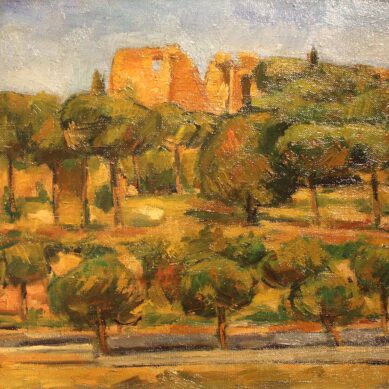You searched
Painter
Alessandro Focosi
Are you interested in the sales or the purchase of his artworks?
We buy works of this artist
and of other painters and sculptors from the 16th century to the first half of the 20th century
The Berardi gallery offers a free and without obligation service for evaluation of ancient and modern art . To find your way in the art market, very complex and full of nuances, it is better to rely on a professional consultant who can answer fast and concretely to your needs. The clarity of the answers will resolve effectively the need to estimate or sell an asset.
Contact us immediately without commitment
Answers also in 24 hours:
Alessandro Focosi
Alessandro Focosi
Alessandro Focosi was born in Milan in 1835 and trained at the Brera Academy of Fine Arts, where his teacher was Francesco Hayez. From the 1950s onwards he began to win a series of prizes at academic competitions, for example, in 1854 he won first prize for the historical invention of the nude, with Apelle portraying Campaspe in the presence of Alessandro.
In 1855 he managed to win the Grand Academic Competition for the figure with Filippo Maria Visconti giving freedom to the kings of Aragon and Navarre. In the following years he continued to exhibit paintings of history or biblical subjects at Brera, such as Jaele showing Sisara to Barak, but also portraits and busts, characterised by considerable drawing expertise, such as Ritratto virile.
At the end of the 1850s he was awarded a Pensionato, which enabled him to stay in Turin, Florence and Rome between 1858 and 1860. He continued to send his pensioner essays to Brera, among which Tasso in the Hospital of Sant’Anna in Ferrara and Alessandro de’ Medici and Luisa Strozzi were particularly appreciated by the jury.
In 1861, he presented Cain Struck by God’s Curse at the Florence Exhibition and again the retirement essay on Alessandro de’ Medici and Luisa Strozzi at the Turin Exhibition in 1863. In the meantime, in Milan he sent Le nozze di Boccaccio Adimari con Luisa de’ Ricasoli (The Marriage of Boccaccio Adimari with Luisa de’ Ricasoli) and in 1864 Tasso fuggito da Ferrara si presenta alla sorella a Sorrento (Tasso escaped from Ferrara presents himself to his sister in Sorrento), a painting now in the Musei Civici in Bologna.
Up to this point he was still mainly modelled on the manner of Hayez, but after his stay outside Milan he was influenced by the poetics of the Purists and in particular Luigi Mussini.
His painting became slightly freer, gradually moving away from the rigid academic stylistic elements and towards the modern manner. In fact, what emerges from the history paintings of the mid-1960s is a greater attention to historical reconstruction, which is no longer influenced by the typically Hadezian romantic accent.
This is particularly visible in the work Caterina de’ Medici induce her son Charles IX to sign the order to massacre the Huguenots, of 1866, but also in Un costume tartaro and Una battuta d’aspetto, presented in the same year in Turin.
Aurora primaverile, presented at the Universal Exhibition in Paris in 1869, was a great success, as was his last work, Carlo Emanuele I duca di Savoia scaccia l’ambasciatore di Spagna (Charles Emmanuel I Duke of Savoy Expels the Spanish Ambassador), which won him the coveted Broglio Prize. He died in 1869 in his native Milan.
Elena Lago





